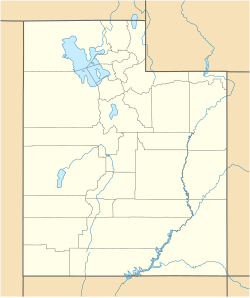Enos Wall Mansion | |
 | |
| Location | 411 East South Temple, Salt Lake City, Utah |
|---|---|
| Coordinates | 40°46′12″N111°52′47″W / 40.769928°N 111.879610°W |
| Built | 1880 |
| Architect | Richard K.A. Kletting |
| Architectural style | Classical Revival |
| Part of | South Temple Historic District (ID82004147 [1] ) |
| Designated CP | July 14, 1982 |
The Enos Wall Mansion, at 411 East South Temple, in Salt Lake City, Utah, was built in 1905. It was designed by Richard K.A. Kletting. It was listed on the National Register of Historic Places as a contributing building in the South Temple Historic District.
It serves as the Thomas S. Monson Center of the University of Utah. [2] [3]

